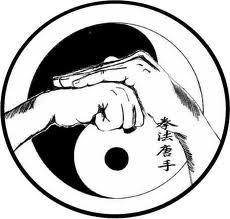While there are many systems using Kempo and the alternate Kenpo spelling, there seems to be some misconceptions in regards to the term Kenpo vs. Kempo as it pertains to systems with a lineage to the Hawaiian Karate / Self-Defense traditions; e.g. Mitose’s Kosho Ryu Kenpo; Chow’s Chinese Kempo, and Parker’s American Kenpo and arts with a lineage back to any one of these systems.
Here’s my take on these misconceptions:

1. The Meaning of Kempo / Kenpo
The claim is that “Kempo / Kenpo” is a specific martial art system handed down from Bodhidharma (Daruma / Tamo) is inaccurate (or a gross embellishment).
Kempo, 拳法, is simply the Japanese translation of the word “Chuan Fa” (quan fa), with the Cantonese romanization typically being “Ken Fat” / “Kyun Faat”, denoting self-defense systems with a Chinese origin.
In the West, it is often translated as “law of the fist”. However, the more literal translation is “fist method”. This should not be confused with Kenpo, the sword method, as it is written with different Chinese characters 剣法 but pronounced the same as Kenpo (fist method) in Japanese.
In Chinese, the typical meaning of the word “Chuan Fa” is “boxing” or ‘fighting technique’. From a Japanese perspective, when saying Kempo, it has an implied meaning of “Chinese Boxing” or “Chinese Fighting Techniques”.
Nothing more, nothing less.
2. Is it spelled with an N or M?
Then there’s the question in regards to spelling of KeNpo vs KeMpo. I’ve heard some argue that if they spell it with a “N” that it is of Chinese origin, while spelling it with a “M” denotes Japanese origin.
This is also an incorrect assumption.
It is simply a romanization “error”. It is the same characters in Japanese and is pronounced exactly the same. In “hiragana” (the Japanese phonetic alphabet) both Kenpo and Kempo would be spelled in this manner: けんぽう.
The romanization to KeMpo is from the traditional Hepburn romanization system, which was first used in the 3rd edition of the Japanese – English dictionary in 1887, and named after James Curtis Hepburn.
3. Why the difference between KeNpo and KeMpo then?
The original art of KeNpo taught in Hawaii was by Reverend James Mitose, who taught Kosho-Ryu Kenpo Jujutsu at the Official Self-Defense Club in Hawaii during the 1940s.
And the primary reason for the variation of spelling from Kenpo to KeMpo in Hawaii was because of Professor William K.S. Chow. He wanted to separate himself from the earlier spelling of KeNpo as used by Mitose, and also separate his art from the spelling used by some of his other students on the mainland (who chose to call their art KeNpo).
As a side note, Professor Chow was apparently the first in Hawaii to combine the words Kempo & Karate… to form the now popular term “Kempo Karate” (Kenpo Karate), although the term “Karate Kenpo” had been used prior (to Professor Chow’s usage) in the book “Karate Kenpo” by Mitsu Mizuho in 1933.
Copies of this book were brought to Hawaii by Mizuho himself in 1933, and it had been circulated within the Karate community there during the 1930s.
–
These days you can typically understand the lineage of a system by the way it’s spelled. Those spelled with an “M” often have a lineage to the martial art taught by Professor William K.S. Chow or his students in Hawaii; while the alternate spelling, KeNpo, is often used by systems with a lineage to Ed Parker (the founder of American Kenpo Karate and a student of Professor Chow).

Like those IDIOTS who argue Wing Chun, Ving Tsun…. This whole business has gotten out of hand!!
Great Article! Thank you for writing it! Peace!